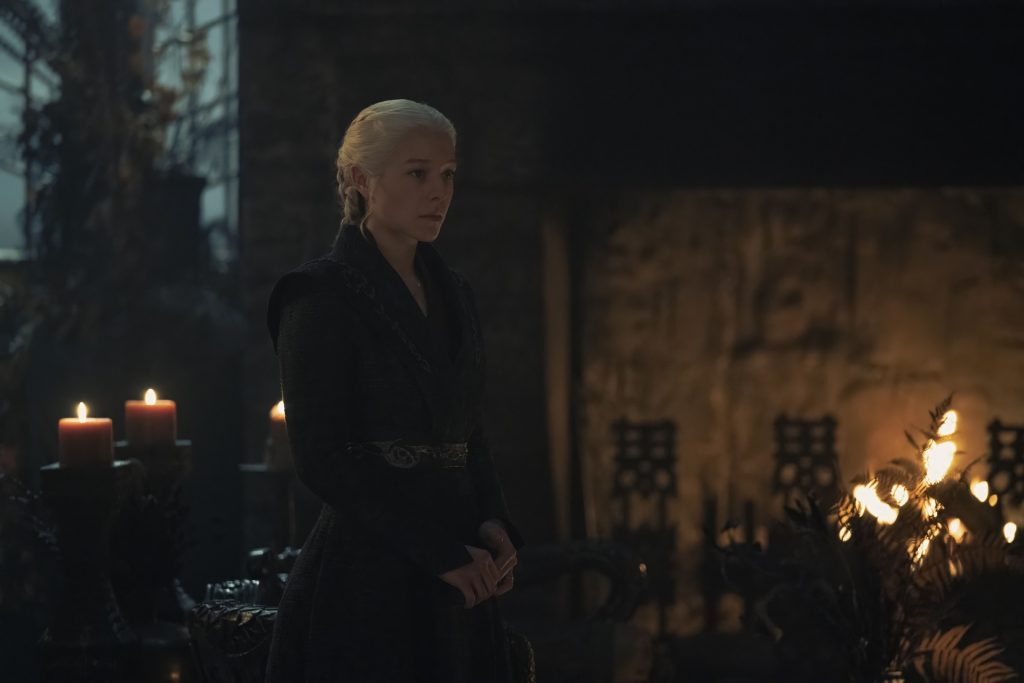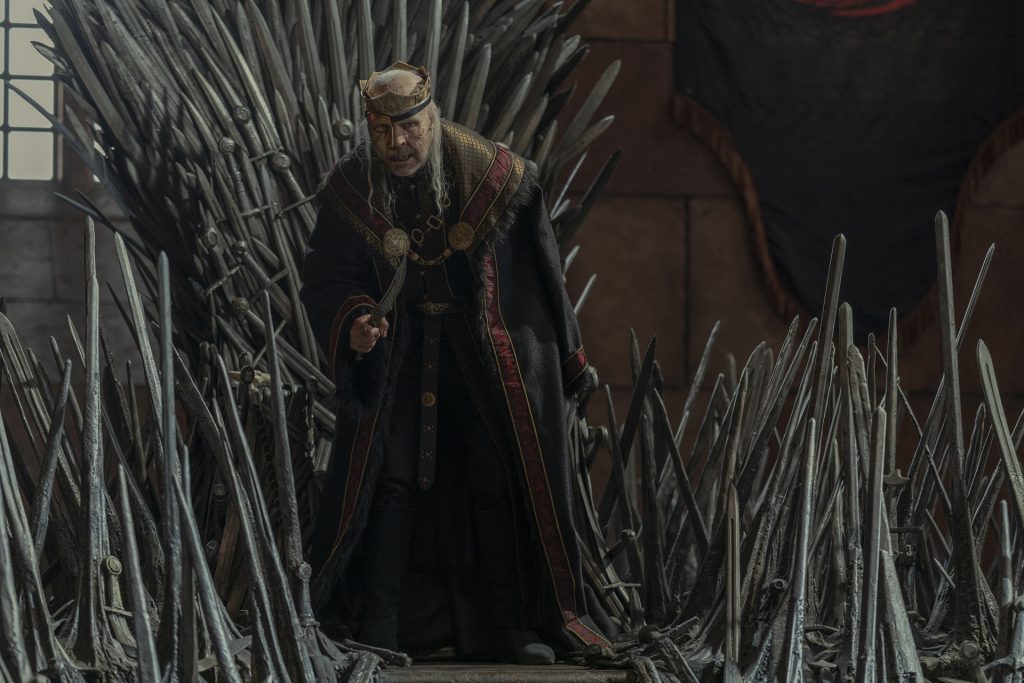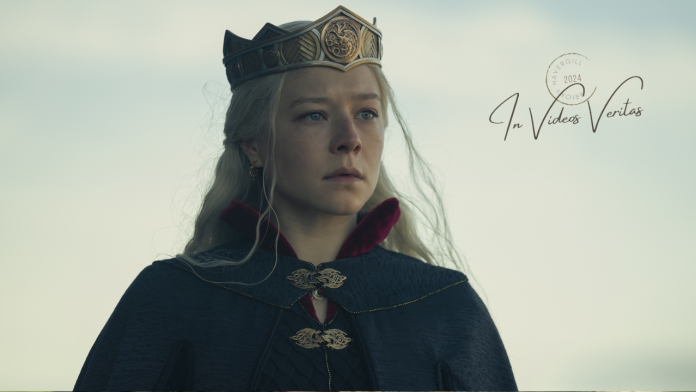Welcome to In Videos Veritas, where accuracy and artistic licence fight it out in the coliseum of audience experience.
The goal of this column is not to lambast a piece of media for failing to deliver perfect ‘historical accuracy’, something that is impossible to define, impossible to achieve, and rarely ever an acknowledged intention of the creators anyway. Nor is it my goal to overly praise works that feel authentic to their period but fall flat in other areas. So, what am I doing?, you may wonder. To put it simply: it’s interesting to explore how fact and fun interact, with an ultimate focus on what we are willing to include, embellish, or omit from the former in order to attain the latter.
Over two articles I will be discussing the historical inspirations behind House of the Dragon and Game of Thrones. The two HBO television series are adapted from the works of George R. R. Martin, specifically A Song of Ice and Fire and Fire and Blood. Martin’s works are set in the fantasy realm of Westeros, and several plot points feature magic, dragons, and the undead. For this reason, I will not be giving either show the usual separate “fact” rating and “fun” rating, instead opting for a single rating that relates to the overall quality and entertainment value of each show. This article was partly inspired by the wonderful Rex Factor podcast, who discussed some of the historical inspirations behind Game of Thrones back in 2019.
Spoilers for Game of Thrones and House of the Dragon (up to series two, episode four) ahead. This article will reference some adult themes, so please read at your own discretion.
Empress Matilda, the Original “Realms Delight”
In November 1120, around 300 people boarded The White Ship in Normandy, aiming to hop across the Channel and disembark in Southampton. The ship was newly redone, laden with wine, and offered up to King Henry I of England by its captain. Henry himself did not take the ship, and his nephew Stephen of Blois was forced to remain on land, possibly by a bad case of diarrhoea. However, Henry’s son, William Adelin, the heir to the throne, as well as many of Henry’s illegitimate children, set off on the fast, fashionable vessel with a whole host of nobles. The crew and passengers got increasingly drunk on the cargo, speeding ahead out of Barfleur harbour into the dark waters. Somewhere, not much later, not particularly far out, the ship hit a rock and capsized, drowning almost everyone on board. One survivor clung to the rock that the ship had hit, a butcher from Rouen, and upon his rescue, he was able to tell the tale of the White Ship disaster.
It was a catastrophic national tragedy. England had lost its heir to the throne, Henry I had no other legitimate sons, and his first wife had died a couple of years before. He quickly remarried, choosing Adeliza of Louvain, a woman over thirty years his junior, in the hopes of producing more children. It was not to be. With his power-hungry cousins watching closely, Henry I was left with one option to secure the succession of his line, his daughter, Matilda.
Sounding familiar?
To (over)simplify, with this current cast of figures, Henry I is Viserys Targaryen and Matilda is Rhaenyra Targaryen. The tragic death of Henry’s legitimate son could certainly be compared to the death of Rhaenyra’s baby brother, Baelon, in the first episode of House of the Dragon, with Henry’s quick remarriage to Adeliza inspiring Viserys’ equally distasteful match with Alicent Hightower. Henry’s circling cousins, watching to see which way the throne might fall, are reminiscent of Daemon Targaryen, Rhaenyra’s covetous uncle, and the Velaryons, the family whom the Queen That Never Was, Princess Rhaenys, married into.
Even the confusing names and tangled family trees are similar, with the many Henrys, Stephens, Williams, and Matildas emphasised to an extreme with the seemingly endless Targaryen derivatives of Rhaenyra, Rhaenys, Rhaena, Rhaegar, Vhagar et al.
I know it’s baffling, so bear with me.
Matilda was a fascinating character in her own right, and by the time she was named heir, she had already lived an exciting life. She was sent to Germany as a young child to become the consort of Holy Roman Emperor, Henry V, and received an extensive education in culture, language, and household management. During her marriage, Matilda was crowned as Empress, a title she used until her death despite its sometimes disputed legitimacy. She also served as regent of Italy for a time in her husband’s stead and reportedly garnered the nickname “Good Matilda” for her contributions to the Empire. This first illustrious marriage ended in 1125 with the death of Henry V, leaving Matilda a childless but respected widow at twenty-three.
This upbringing has clear parallels to the “Realm’s Delight” Rhaenyra, with both of them initially raised to be productive consorts, well-educated and good with languages, and the recipients of public acclaim. Another similarity is their investiture as heirs to the throne; at Christmas 1126, Henry I gathered his barons and invited them to swear an oath to recognise Matilda as his rightful heir. House of the Dragon depicts this scene beautifully, bringing to life what it might have been like to witness such a pivotal and unusual moment in history.

This is where the paths of Matilda and Rhaenyra somewhat diverge for a short while. Matilda gets remarried, but it is not the slightly icky, passion-fuelled, controversial-but-so-compelling match that Rhaenyra secures with Daemon. No, Matilda’s father marries her off to Geoffrey of Anjou, who is both younger than her and of lower social standing. The pair do not like each other, and it takes several years for the marriage to produce any children (though, eventually, the couple have three sons, much like Rhaenyra and Laenor/Harwin).
Also, obviously, is the issue of Alicent Hightower’s children. Where Henry I produced no further legitimate heirs, Viserys went on to produce four children, including three sons, with Alicent. Why Viserys stands by his eldest daughter’s claim when Henry I would have likely shifted his focus to a legitimate son is surely to create a compelling storyline for a more modern audience.
The Anarchy and The Dance of Dragons
In 1135, Henry I died suddenly. Before his death, his relationship with Matilda and Geoffrey became strained, mirrored by the complete withdrawal of Rhaenyra and Daemon from King’s Landing in House of the Dragon. This emotional distance, as well as the physical distance between the parties, allowed a large enough gap for another contender to enter the ring. Stephen of Blois (of earlier potential diarrhoea fame).
A favourite nephew of Henry I, Stephen rushed to England and seized the crown, likely before Matilda even knew that her father was dead. Rumours that Henry I had either reneged on his recognition of Matilda as heir or reinforced her claim on his deathbed abounded during what followed, though it is unknown if Henry made any such comments.
As you might have guessed, it’s a clear match to the fallout of Viserys’ death in House of the Dragon, though Stephen appears much more self-motivated than the hapless Aegon II. We see much more of Viserys’ final moments, though they are marred by misunderstanding and produce the same overall result.

King Stephen I, by many accounts, was an affable, chivalrous ruler. He is often recalled in public memory as a bad king, but it is hard to tell if that is Plantagenet propaganda or simply the product of ruling during such intense unrest. Surely resentment would build following years of war, and Stephen survived a significant while on the throne, so he cannot have been incompetent. In reality, Stephen was a younger brother who had carefully sidestepped his older brother by being quicker to act, a deftness which we have seen in Aegon’s younger brother Aemond.
Later in his rule, however, ‘he began to alienate many nobles who had been key advisors to Henry I by promoting his own friends’, resulting in growing discontent. Aegon II seems to be an accelerated exaggeration of the worst of these rumours, showing momentary kindnesses to the “smallfolk” before immediately trading his shrewd grandfather for the inept Criston Cole, surrounding himself with questionable “friends”, and storming off into battle with no consideration for succession.
Just like House of the Dragon, The Anarchy had a wider ensemble of fascinating characters involved. Let’s do a quick round-up of some key parallels. First, Matilda’s uncle, King David I of Scotland, who was a staunch supporter of his niece throughout the wars. It is easy to see elements of Cregan Stark in this stalwart defender from the North, but also Daemon. Another firm defender of Matilda’s claim was her illegitimate half-brother Robert of Gloucester, who was possibly motivated by his own self-interest as much as personal loyalty. He headed Matilda’s army, and his self-righteous boldness feels reminiscent of both Daemon and Rhaenys.
In the opposition, we have Matilda of Boulogne, Stephen’s wife. She was allowed to rally an army and exercise power because she was doing so on behalf of her husband, although Empress Matilda was criticised for doing much of the same on behalf of herself. This uncomfortable hypocrisy recalls Alicent acting as regent in all but name for Viserys and sitting firmly on Aegon’s council to defend his crown, despite Westeros’ staunch refusal to be ruled by a woman.
Finally, we have Empress Matilda’s son Henry II, who Matilda gave up her own claim to promote. He could speculatively be compared to Jacaerys, or another of Rhaenyra’s brood, but we shall have to wait and see who is sitting on the Iron Throne by the end to confirm this.

When in Rome: The Targaryens as the Imperial Family
Whilst the Targaryens and the Anglo-Normans share great similarities (the original Aegon, “the Conqueror”, certainly owes much to the King William of 1066 fame), the Targaryens also mirror another controversial ruling family, the Julio-Claudian dynasty.
I first compared the Roman Imperial family to the Targaryens in my article about Domina, focusing on their succession woes. Emperor Augustus’ desperation for a legitimate male heir dominates the early years of the Roman Empire and causes intense tension within the imperial family. The contrasts between the moral-obsessed Augustus and his wayward daughter, Julia, have shades of Viserys’ exasperation with the young Rhaenyra, although Viserys never achieves the ruthlessness that Augustus was coldly capable of.
Post-Augustus, the Julio-Claudian family developed a fantastic penchant for murdering each other, marrying each other, and defying themselves. Whilst they didn’t practise brother-sister marriage like the royal Ptolemies in Egypt, Agrippina the Younger married her own uncle, the Emperor Claudius, to mutually strengthen their power. It all feels very Targaryen. Even something similar to indecent Roman home decor can be seen on the walls of the Red Keep!
The Blurring of Fact and Fiction
Whilst it is fun to spot parallels between fiction and what we assume to be the truth, George R. R. Martin is not trying to retell history as it happened, and the A Song of Ice and Fire universe is fantasy, not historical fiction.
It’s essential to remember that the past is not a story imagined by a single author or a writers’ room, where everything can be made to make sense because it is made-up. The people who came before us had as muddled an existence as we do today, living confusing, contradictory, and sometimes seemingly random lives that don’t fit neatly into one plot or character arc. History is a human construction, using the sources that we have and compiling them into a meaningful record. Where the lines between works of history and works of fiction can blur is in how both can reveal the common themes and biases of the age they are produced in, often unintentionally.
Engaging with the past in the way that House of the Dragon does could be considered a form of translation or adaptation, making sense of The Anarchy and the Roman Empire for a modern audience. I have chosen to highlight just a few inspirations that are fascinating in their own right, in the hopes that they might encourage research rabbit holes, a greater appreciation of Martin and HBO’s rich worldbuilding, or simply provide a moment of diversion. We live in an unsettled world, and can find comfort, clarity, and hope by reflecting on similar periods of unrest through the comparative safety of fiction.
Rating: 8/10
Words by Briony Havergill
Some selected sources and recommendations: A History of the Roman Empire in 21 Women (Dr Emma Southon, 2023); BBC HistoryExtra (website and podcast); Betwixt the Sheets: A History of Sex, Scandal, and Society (podcast, 2022-); Empress Matilda, George R. R. Martin’s Muse (Emily Zarevich, 2023); English castle’s link to House of the Dragon (Ethan Gudge, 2024); Gone Medieval (podcast, 2021-); History is Sexy (podcast, 2018-); ‘It’s like “Lord of the Rings”, Sir. But real!’: Teaching, learning and sharing medieval history for all (Chris Eldridge, 2016); Real ‘Game of Thrones’ brought anarchy to England, experts find (Medieval Warfare, 2017); Rex Factor (podcast, 2010-); The Plantagenets: The Kings Who Made England (Dan Jones, 2012).
Support The Indiependent
We’re trying to raise £200 a month to help cover our operational costs. This includes our ‘Writer of the Month’ awards, where we recognise the amazing work produced by our contributor team. If you’ve enjoyed reading our site, we’d really appreciate it if you could donate to The Indiependent. Whether you can give £1 or £10, you’d be making a huge difference to our small team.
